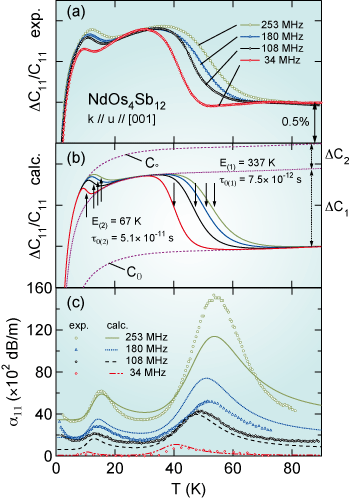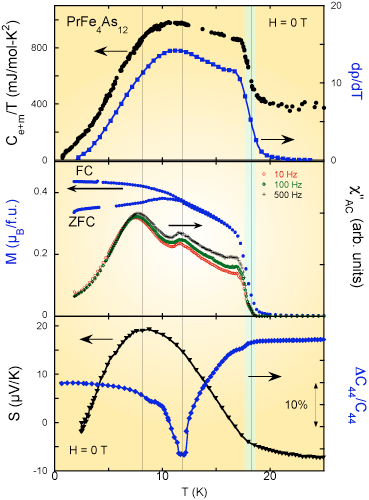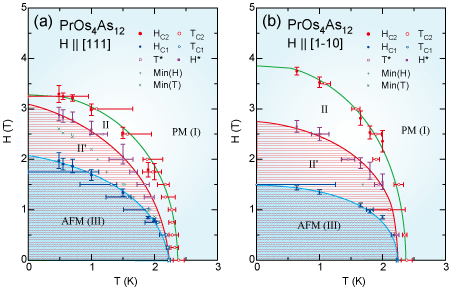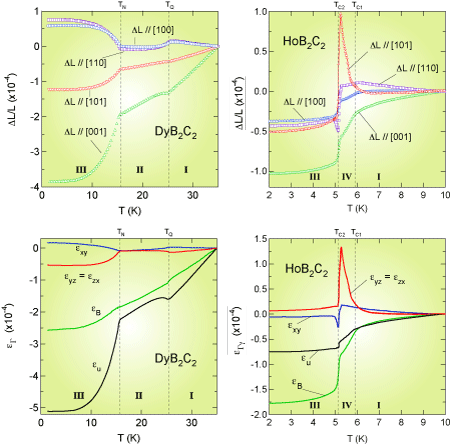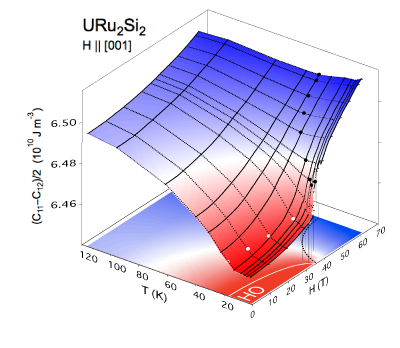Topics: Discovery of Double Ultrasonic Dispersion due to Rattling in NdOs4Sb12
日本語解説 >> Topics「カゴ状化合物のラットリング」
|
Ultrasonic investigation of the off-center rattling in the filled skutterudite compound NdOs4Sb12 Tatsuya Yanagisawa, Pei-Chun Ho, William M. Yuhasz, M. Brian Maple, Yuri Yasumoto, Hiromu Watanabe, Yuichi Nemoto, and Terutaka Goto |
The off-center rattling of Nd rare-earth ions in the filled skutterudite compound NdOs4Sb12 has been investigated by ultrasonic measurement. The longitudinal C11 mode for frequencies between 34 and 253 MHz shows a marked frequency dependence in elastic constant and ultrasonic attenuations at two different temperatures centered at around 45 and 15 K. The relaxational frequency dependence of ultrasonic dispersion reveals a thermally activated Γ23-type off-center motion of Nd-ions, involving local charge fluctuations with Γ23 symmetry in the (OsSb3)4 cage. An attempt time τ0,(1)=7.5×10-12 s and an activation energy E1=337 K were obtained from fits to the dispersion at around 45 K. The presence of another dispersion at lower temperatures of around 15 K implies that the rattling in NdOs4Sb12 has an additional low-energy excitation characterized by a lower activation energy E2∼67 K with an attempt time τ0,(2)=5.1×10-11 s. J. Phys. Soc. Jpn. 77 (2008) 074607.
Figure (a) Relative change in elastic constant ΔC11/C11 as function of temperature at frequencies of 34, 108, 180, and 253 MHz. (b) Solid lines show calculations of ΔC11/C11 using Landau-Khalatnikov theory. Dotted lines indicate the higher-frequency limit of the elastic constant C∞ and the low frequency limit C0. Arrows indicate the temperatures that satisfy the resonant condition of ω ∼ 1/τi. (c) Temperature dependence of ultrasonic attenuation coefficient α11 at frequencies of 34, 108, 180, and 253 MHz. Solid lines are theoretical fits using the parameters. (*This research was performed at UC San Diego and Niigata University in 2006.) |
